- Learning time
- 20 minutes
- First play time
- 80 minutes
Metropolys
Designed by: Sébastien Pauchon
In Metropolys players are hoping to establish themselves as the greatest architects in the city, and they do this by a canny blend of bidding and placement of their pieces – the buildings.
The board shows a thriving metropolis broken up (by a river) into five distinct districts, and each district divided further into several areas. It’s also populated with three sets of tokens – metro, archeology and posh ladies, signifying a trendy district. More of these later.
Each player starts with a set of buildings numerically valued from 1 to 13 and everyone is dealt two objective cards – these will define how many points that player gets at the end of the game, depending on where they have built their buildings. The cards may reward adjacent buildings, a certain number of buildings per district, buildings built on a certain type of landscape and so on.
The starting player bids for control of an area by placing a building there. Play then moves clockwise with each subsequent player having one of two choices – they can make a higher bid for an adjacent area, or pass. Once all but one players have passed, the winning player leaves their bid – their building – on the board, taking possession of the area their winning bid was placed in (note: not the starting bid, unless there were no further bids at all!) and picking up the token in it, if there is one. They then begin a new auction by placing a bid on any available area and play continues this way until one player runs out of buildings, at which point the game ends.
If that sounds rather bland, be warned: there’s more to Metropolys than meets the eye. For a start, you have your objective cards to consider and often your best-laid plans can be torpedoed – inadvertently or otherwise – by other players. Secondly, if you use up your high-value buildings early on, you’re pretty much out of the bidding for the mid-section of the game, so you need to think about where and when you bid. Thirdly, as the game closes out you’ll find the starting player can pick up areas with no competition at all because there are no adjacent areas to bid on. And finally, there’s those tokens:
The Metro tokens award a point each, but also three points to the player who has collected most of them by game-end.
The Posh Lady token denotes a sought-after area and are worth three points each.
The Archeology tokens mean it’s expensive to build in that region, and are minus one point at the end of the game – plus an additional hit of minus two points for the player who most recently built over an archeological point of interest!
So what initially seems like a squabble for territory actually has a fair amount of nuance and strategy to it, both from the changing face of the map and the fact your buildings are dwindling before you – do not forget, as soon as one player gets rid of all their buildings, the game immediately ends.
The guru's verdict
-
Take That!
Take That!
There's no reason for any player to feel targeted, although it's possible to be frustrated by events!
-
Fidget Factor!
Fidget Factor!
It really does depend on the players. Metropolys can be a fast-moving family game or played more cerebrally.
-
Brain Burn!
Brain Burn!
As the game closes out you'll need to give your best more a little more thought than in the early, rather more open stages.
-
Again Again!
Again Again!
It's a rather abstract game and can seem a little chaotic on first play, but for all that Metropolys does have simple rules with genuine depth, and can be bashed out in under an hour.

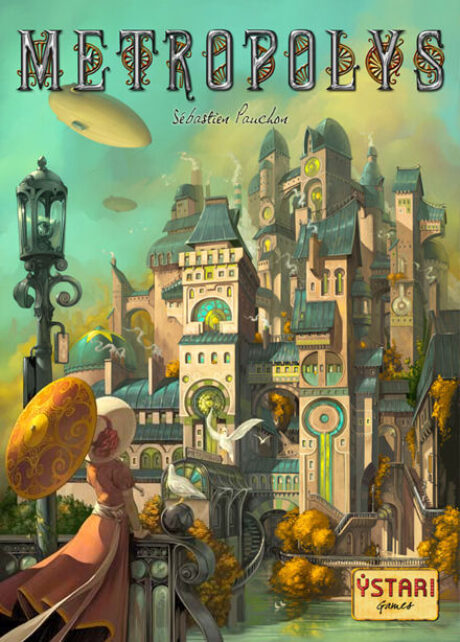
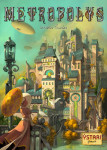
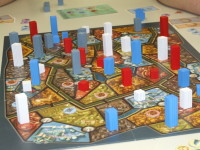
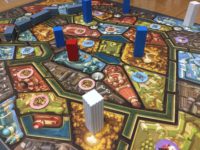


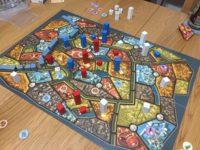


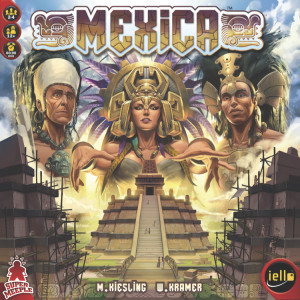
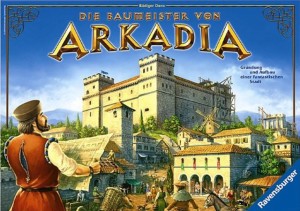
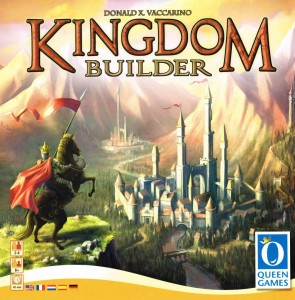
Sam says
If you love the idea building things then other games will hold more appeal, but if you like combative play Metropolys is a clever game, and hugely interactive too - anticipating and blocking other player's moves is important, and the path to victory is rarely just about furthering your own plans.